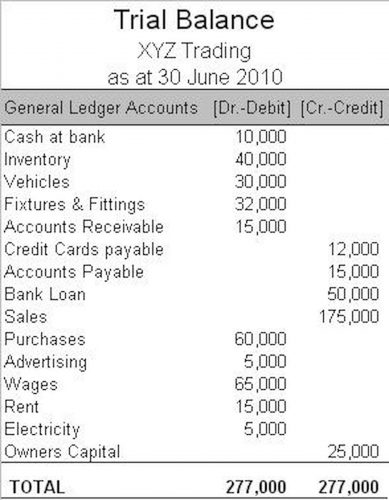Contact us at # 93-1010-9070
A guide to owner’s equity: definition, examples, and calculation

SmartAsset Advisors, LLC (“SmartAsset”), a wholly owned subsidiary of Financial Insight Technology, is registered with the U.S. Transactions that involve stockholders are primarily the distribution of dividends and the sale or repurchase of the company’s stock. As for the “Treasury Stock” line item, the roll-forward calculation consists https://www.bookstime.com/articles/contingent-liabilities of one single outflow – the repurchases made in the current period. Here, we’ll assume $25,000 in new equity was raised from issuing 1,000 shares at $25.00 per share, but at a par value of $1.00. In recent years, more companies have been increasingly inclined to participate in share buyback programs, rather than issuing dividends.
- To do this calculation, you will need a company’s financial statements for at least two periods, like two consecutive quarterly or annual reports.
- Increases or decreases on either side could shift the needle substantially when it comes to the direction in which stockholders’ equity moves.
- Owner’s equity behaves much like a bank account balance, reflecting the ups and downs of financial activity.
- Accounting for changes to stockholders’ equity The starting point for calculating the ending stockholders’ equity is to know what the stockholders’ equity was at the beginning of the period.
- As per the formula above, you’ll need to find the total assets and total liabilities to determine the value of a company’s equity.
- Get stock recommendations, portfolio guidance, and more from The Motley Fool’s premium services.
- Mr. Arora is an experienced private equity investment professional, with experience working across multiple markets.
Cash, cash equivalents, land, machinery, inventory, accounts receivable, and other assets are examples of assets. If the value is negative, the company does not have enough assets to cover all its liabilities, which investors frequently regard as a red flag. Coca-Cola (KO), PepsiCo’s main competitor, also appears to have weathered the storm. As a result, the company’s shareholder equity is expected to be around $23 billion in 2021. For the full fiscal year 2020, it reported approximately $19.3 billion in stockholder equity.
Look at the balance sheet’s stockholders’ equity section
If this figure is negative, it may indicate an oncoming bankruptcy for that business, particularly if there exists a large debt liability as well. A low level of debt means that shareholders how to find stockholders equity are more likely to receive some repayment during a liquidation. However, there have been many cases in which the assets were exhausted before shareholders got a penny.
You can use also get a snapshot idea of profitability using return on average equity (ROAE). A shareholders’ equity ratio of 100% means that the company has financed all or almost all of its assets with equity capital raised by issuing stock rather than borrowing money. This is the amount of company stock that has been sold to investors and not repurchased by the company. It represents the total amount of stock the company has issued to public investors, company officers, and company insiders, including restricted shares. Company equity is an essential metric when determining the return being generated versus the total amount invested by equity investors. A statement of shareholder equity is a section of the balance sheet that reflects the changes in the value of the business to shareholders from the beginning to the end of an accounting period.
Free Financial Modeling Lessons
A higher proportion of owner’s funding compared to debt funding attracts potential investors who are looking for viable companies to invest in. For creditors, a higher shareholder equity ratio is attractive since it shows the company is financially stable and should be able to pay off any debts advanced to it. Ultimately, shareholders’ equity is used to evaluate the overall worth of a company.

